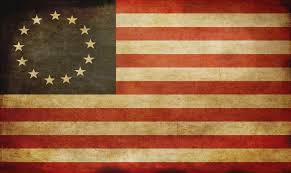Independence Day Construction Facts
 A few Independence Day construction facts:
A few Independence Day construction facts:
- On June 14, 1775, together with the creation of the Continental Army, the Second Continental Congress appointed Richard Gridley as the Continental Army’s first Chief Engineer. Gridley, a Boston native and British Army officer during the French and Indian Wars, laid out the defenses at Bunker Hill and Dorchester Heights which forced the British to evacuate Boston in March 1776.
- The Army Corps of Engineers was formed in 1779. The Corps was primarily comprised of French subjects who were hired by General George Washington from the service of King Louis XVI of France. The Corps was disbanded following the American Revolution, and reestablished in 1802, with the founding of the U.S. Military Academy in West Point, New York. Until 1886, the superintendent of the academy was always an engineer officer.
- The last original man-made Revolutionary War fortification visible in Manhattan is a redoubt located in Fort Washington Park. The redoubt, or earthwork fortification, was intended to blockade British ships from entering the Hudson River. However, when it was completed in 1776, it was discovered that its munitions were not powerful enough to reach the river. When three British frigates managed to sail up the Hudson, it presaged eventual defeat, and Revolutionary troops were forced to surrender Fort Washington on November 16, 1776.
- Washington, D.C. owes much of its design to Pierre Charles L’Enfant, who came from France to fight in the Revolutionary War and rose from obscurity to become a trusted city planner for President George Washington. L’Enfant designed the city from scratch, envisioning a grand capital of wide avenues, public squares and inspiring buildings in what was then a district of hills, forests, marshes and plantations. The centerpiece of L’Enfant’s plan was a great “public walk” which is today’s National Mall.
- When General Washington’s poorly fed, ill-equipped army holed itself up in Valley Forge for the Winter, General Washington’s first orders were to build an encampment of log cabin huts to protect them from the elements. General Washington apparently knew a thing or two about construction. His orders specified the dimensions of each cabin, the materials to be used, weatherproofing, and even specified the thickness of the clay fireplaces which were to be eighteen inches thick. Approximately 2,000 huts were built.
Have a great Fourth!


2 Responses to “Independence Day Construction Facts”
Thanks so much, Garret! Happy Independence Day to you and yours!
Kerry L. Kester
Woods & Aitken LLP
8055 E. Tufts Ave., Suite 525
Denver, CO 80237-2835
kkester@woodsaitken.com
Kerry L. Kester
[cid:image001.jpg@01CE7709.54300FD0]
vCard | Biography
Denver: (303) 606-6713
Lincoln: (402) 437-8513
Omaha: (402) 898-7453
http://www.woodsaitken.com
Denver | Lincoln | Omaha | Washington D.C.
Thanks Kerry. And a happy Fourth to you and yours as well!